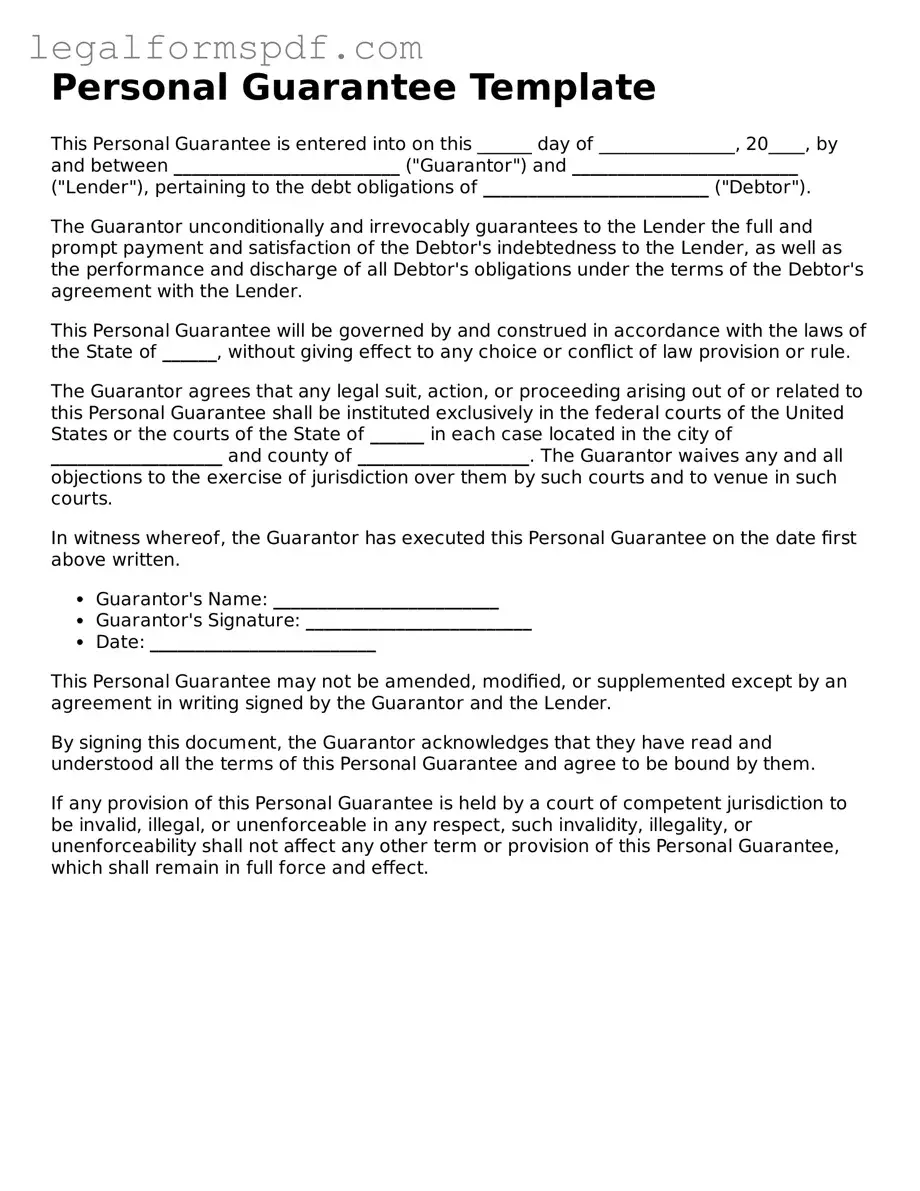Personal Guarantee Template
This Personal Guarantee is entered into on this ______ day of _______________, 20____, by and between _________________________ ("Guarantor") and _________________________ ("Lender"), pertaining to the debt obligations of _________________________ ("Debtor").
The Guarantor unconditionally and irrevocably guarantees to the Lender the full and prompt payment and satisfaction of the Debtor's indebtedness to the Lender, as well as the performance and discharge of all Debtor's obligations under the terms of the Debtor's agreement with the Lender.
This Personal Guarantee will be governed by and construed in accordance with the laws of the State of ______, without giving effect to any choice or conflict of law provision or rule.
The Guarantor agrees that any legal suit, action, or proceeding arising out of or related to this Personal Guarantee shall be instituted exclusively in the federal courts of the United States or the courts of the State of ______ in each case located in the city of ___________________ and county of ___________________. The Guarantor waives any and all objections to the exercise of jurisdiction over them by such courts and to venue in such courts.
In witness whereof, the Guarantor has executed this Personal Guarantee on the date first above written.
- Guarantor's Name: _________________________
- Guarantor's Signature: _________________________
- Date: _________________________
This Personal Guarantee may not be amended, modified, or supplemented except by an agreement in writing signed by the Guarantor and the Lender.
By signing this document, the Guarantor acknowledges that they have read and understood all the terms of this Personal Guarantee and agree to be bound by them.
If any provision of this Personal Guarantee is held by a court of competent jurisdiction to be invalid, illegal, or unenforceable in any respect, such invalidity, illegality, or unenforceability shall not affect any other term or provision of this Personal Guarantee, which shall remain in full force and effect.
